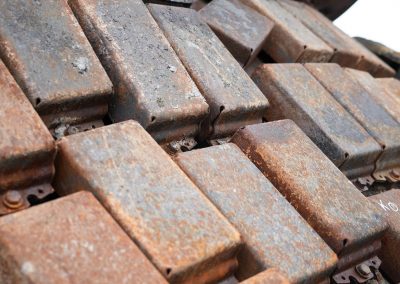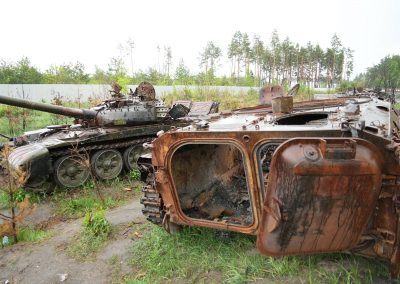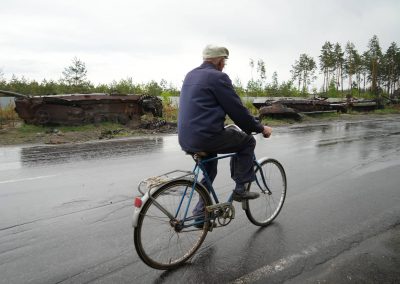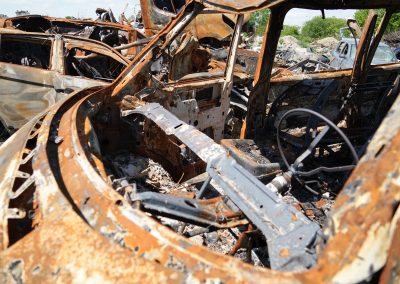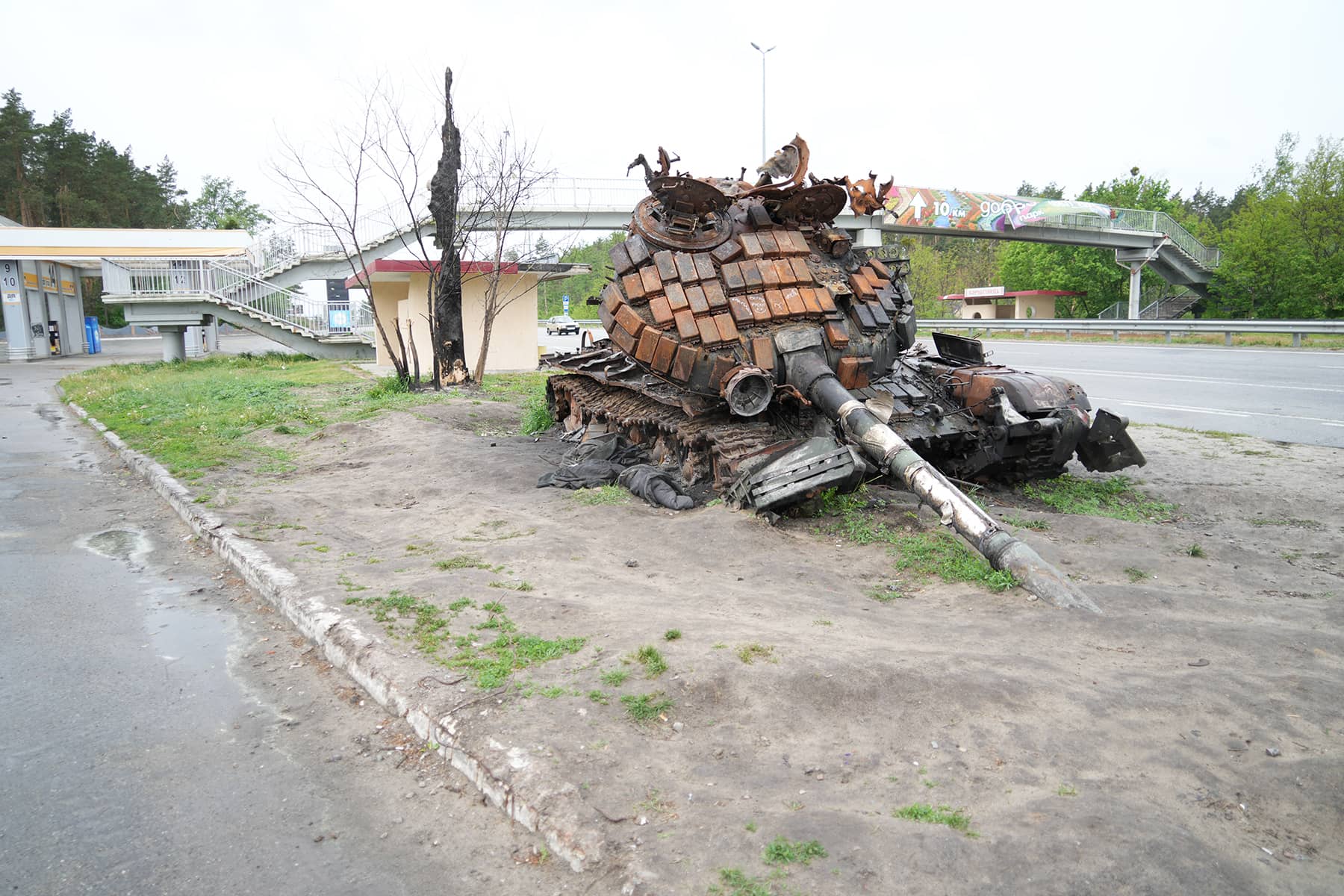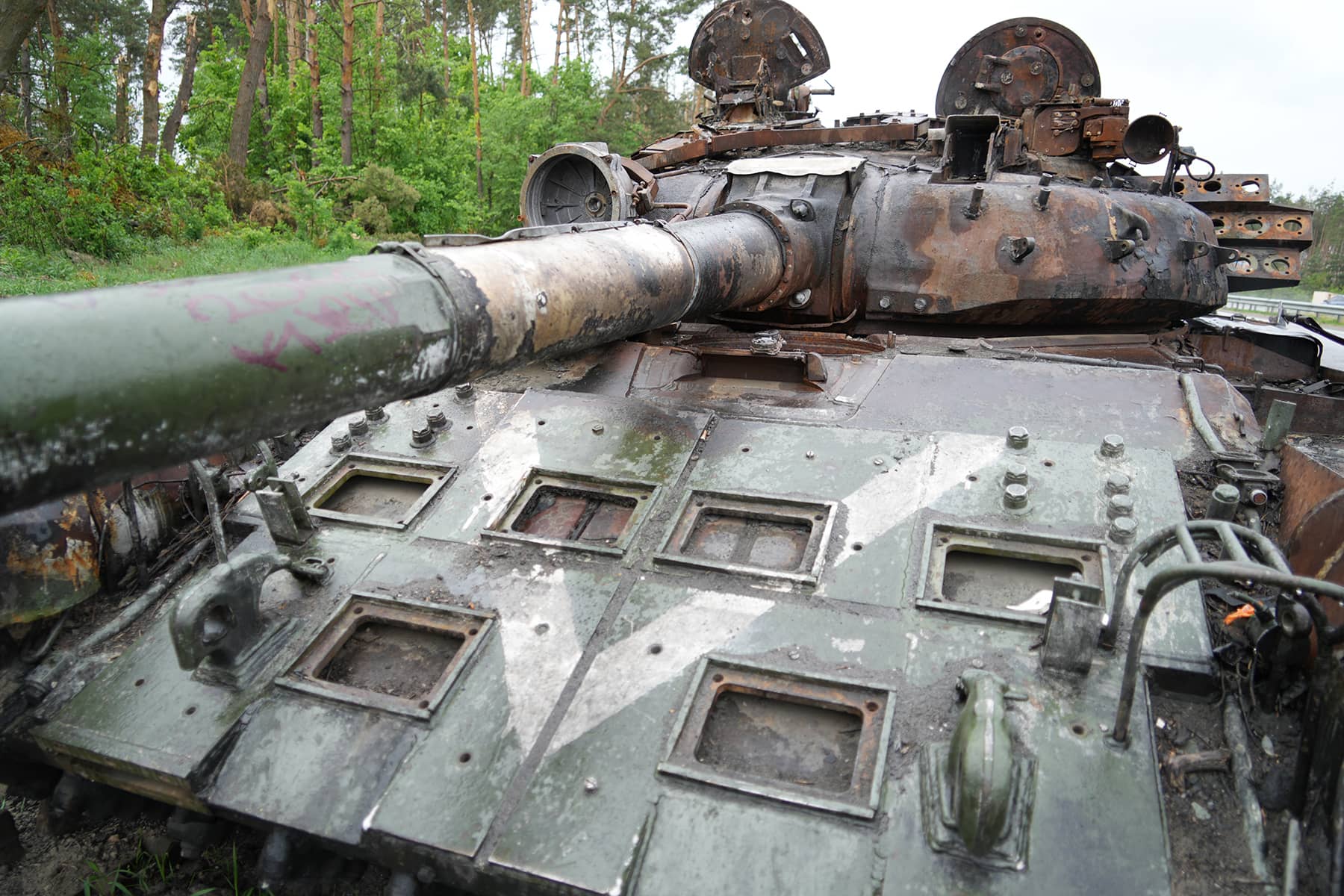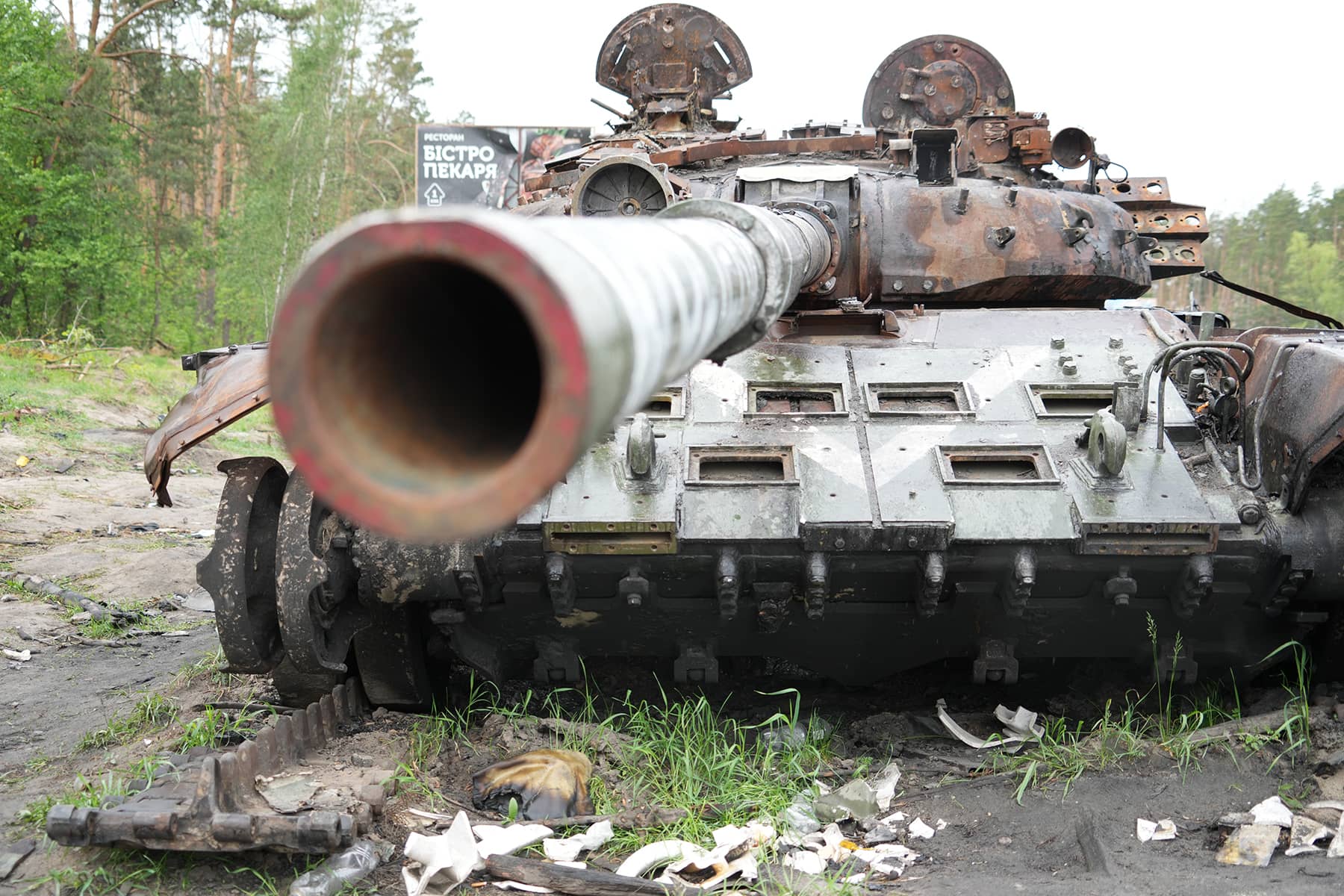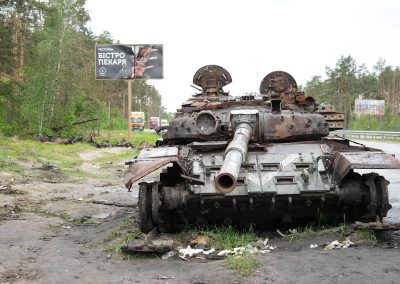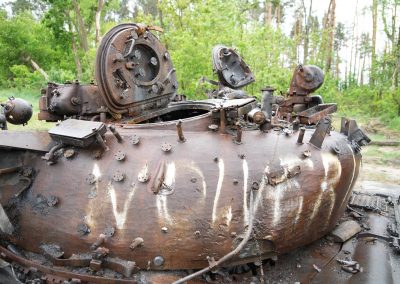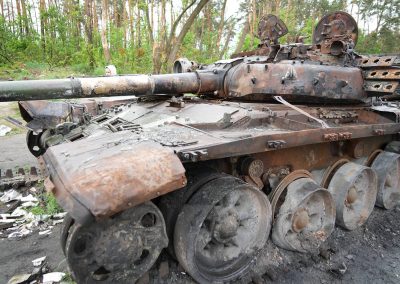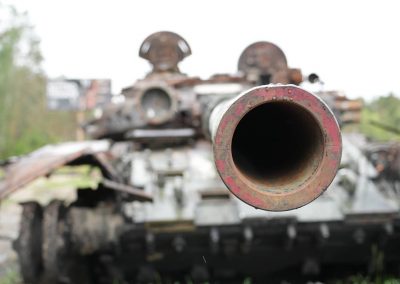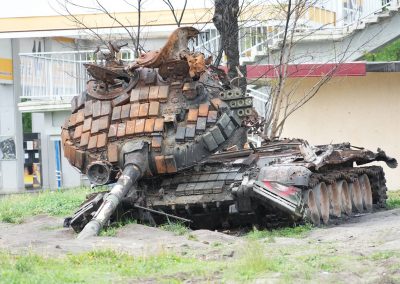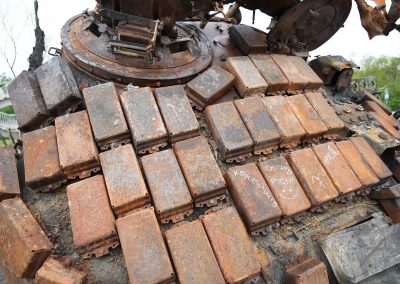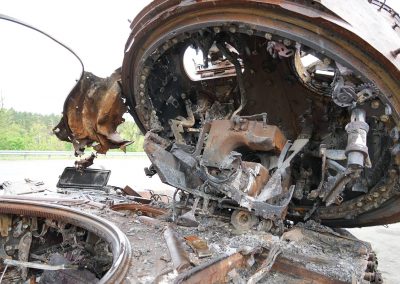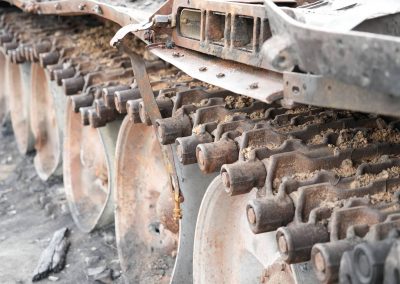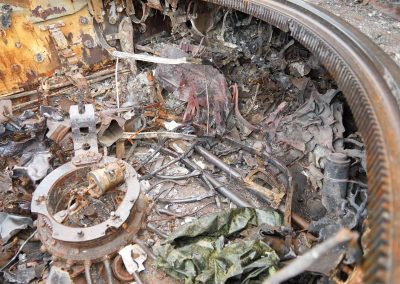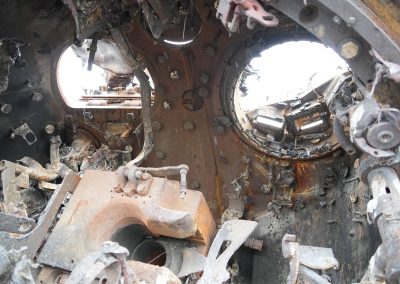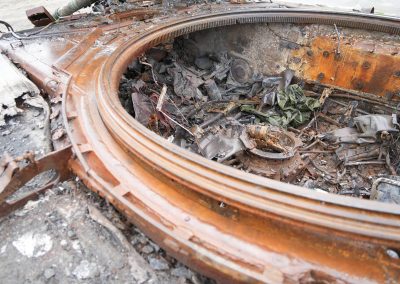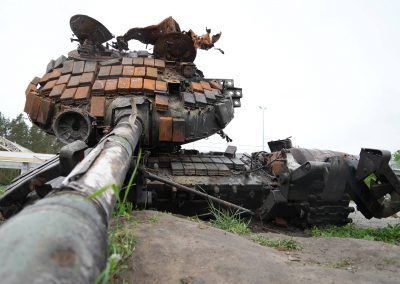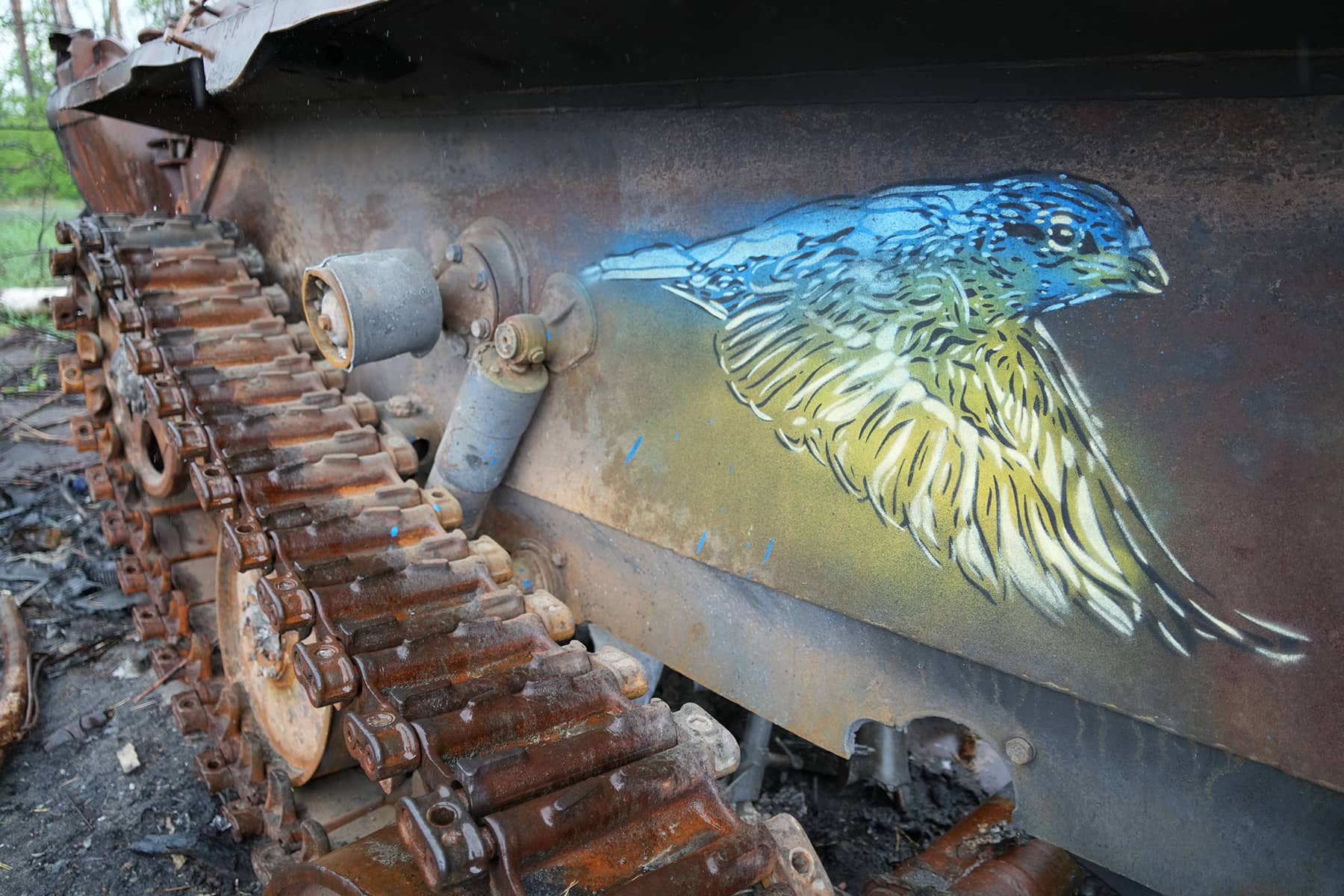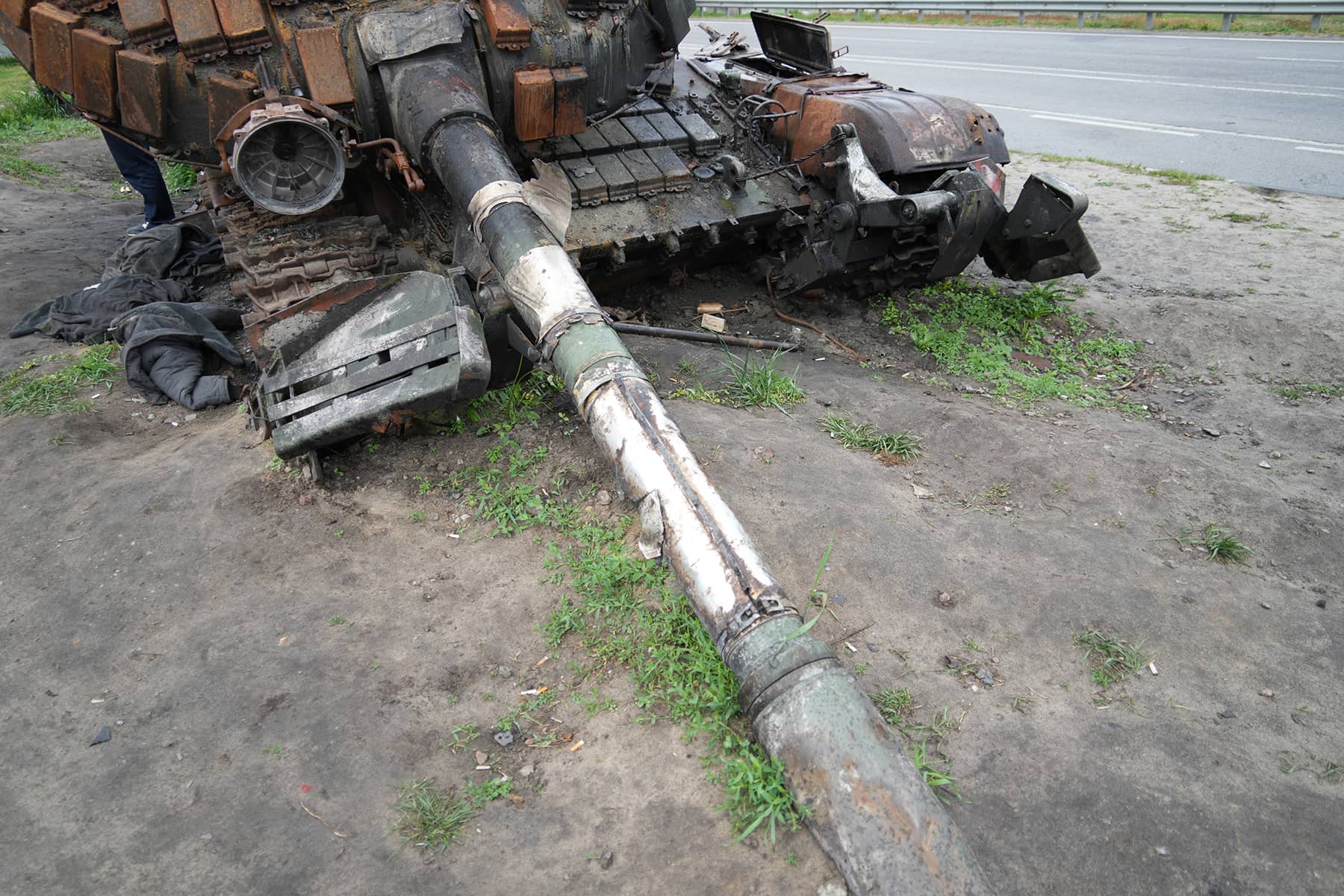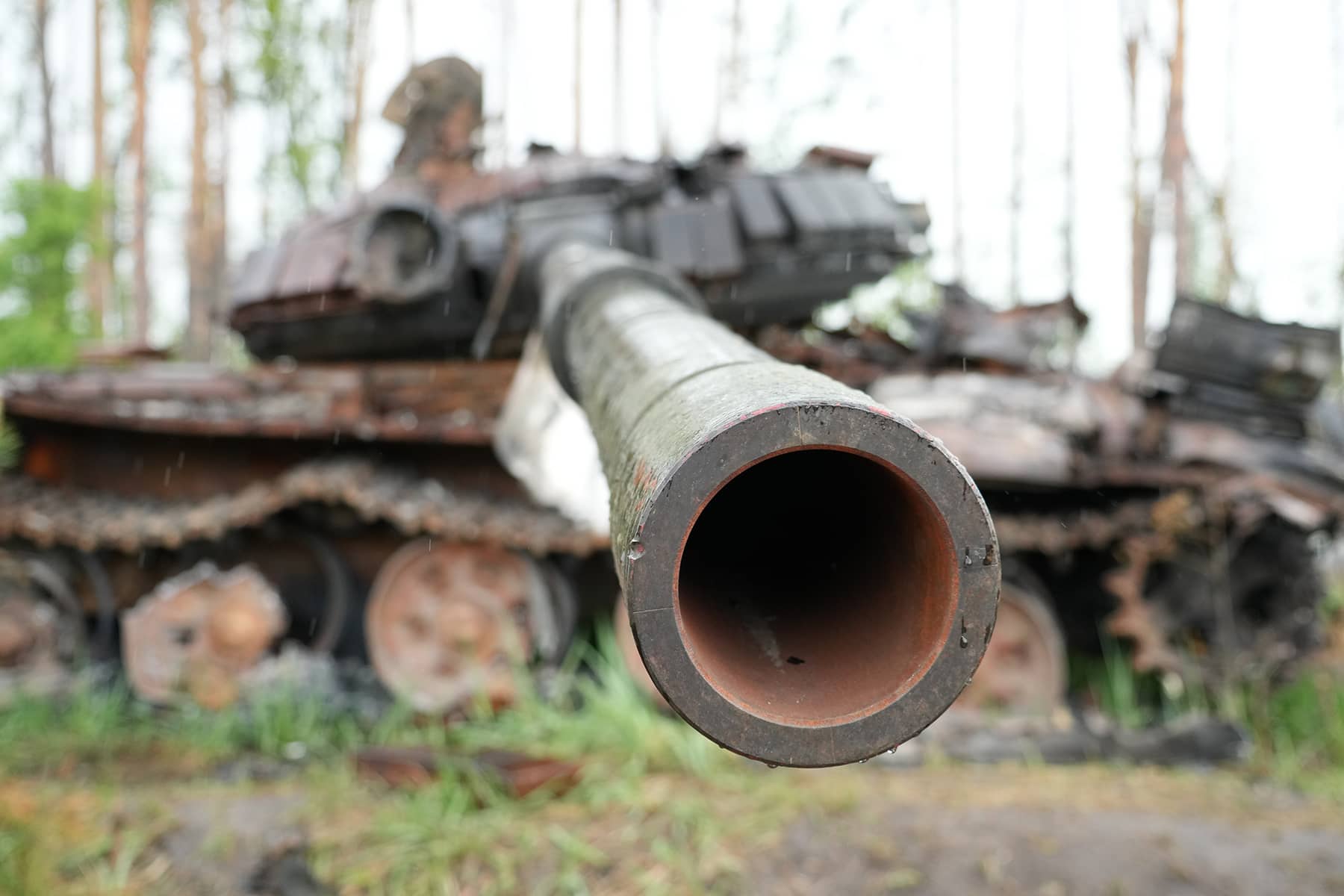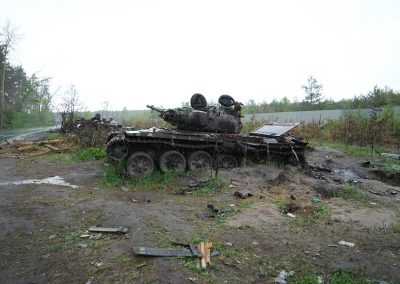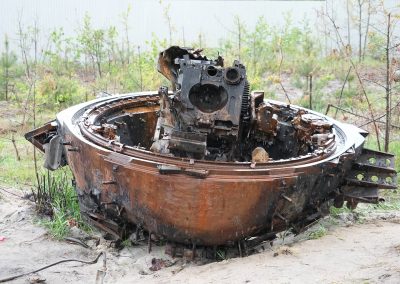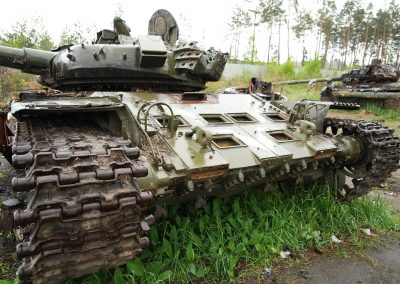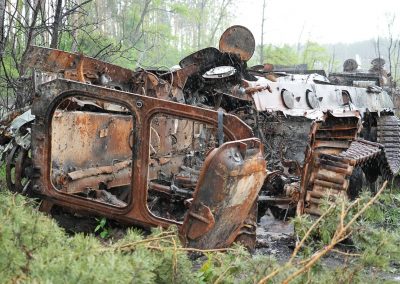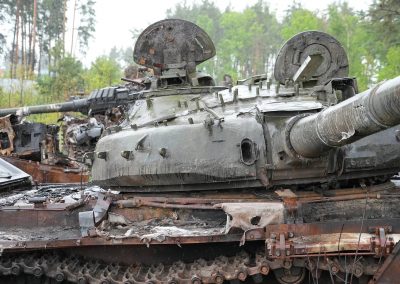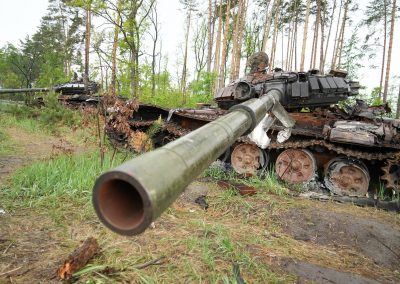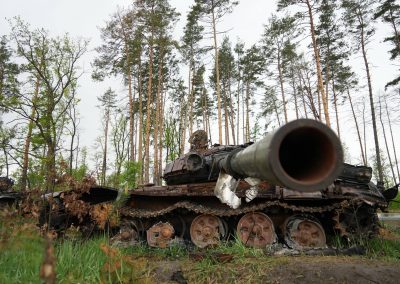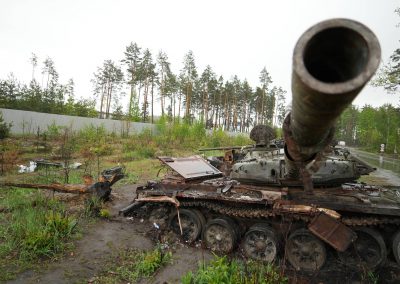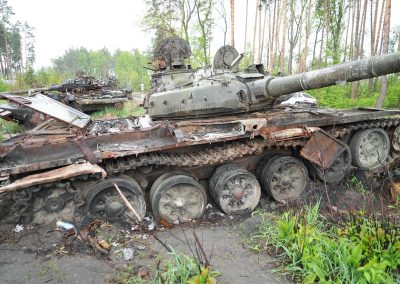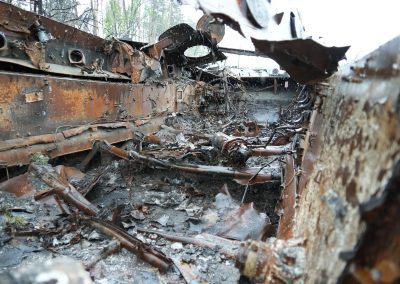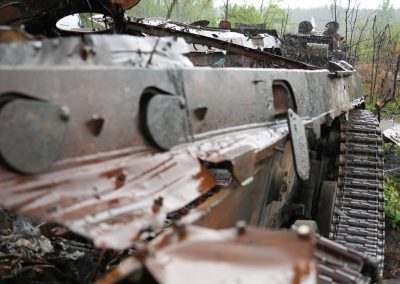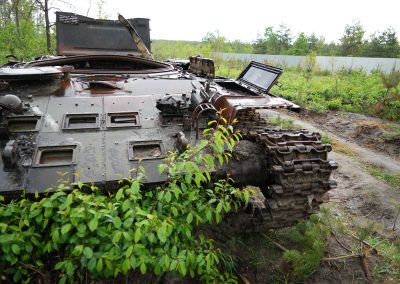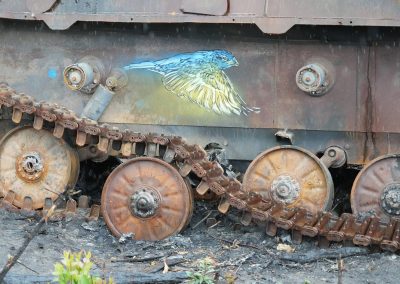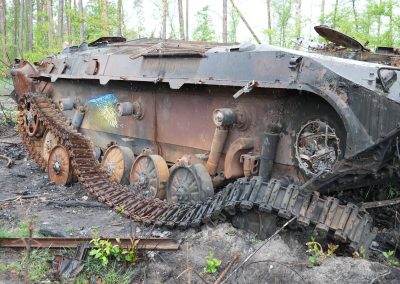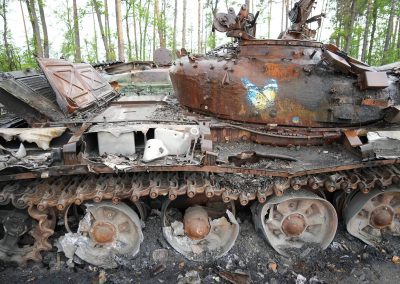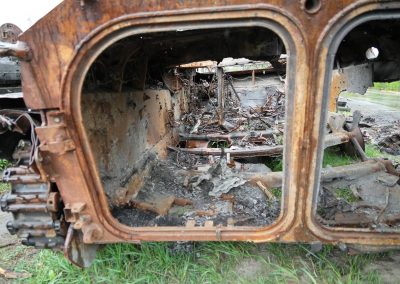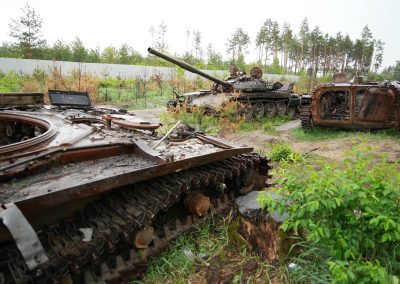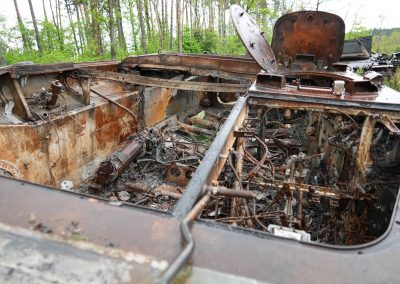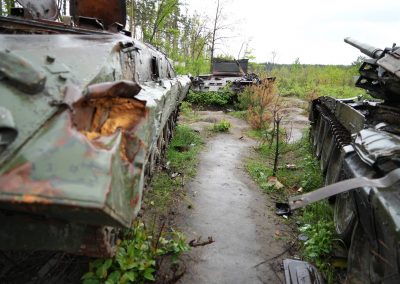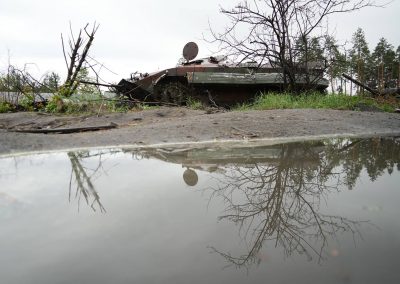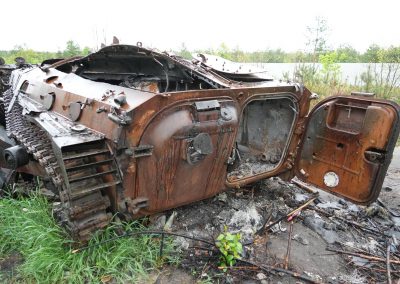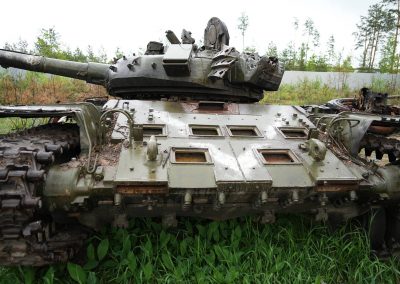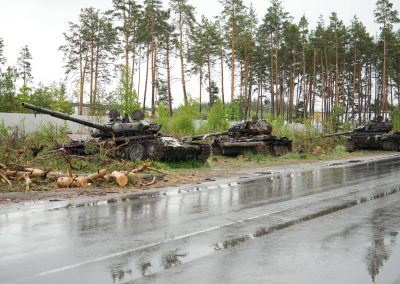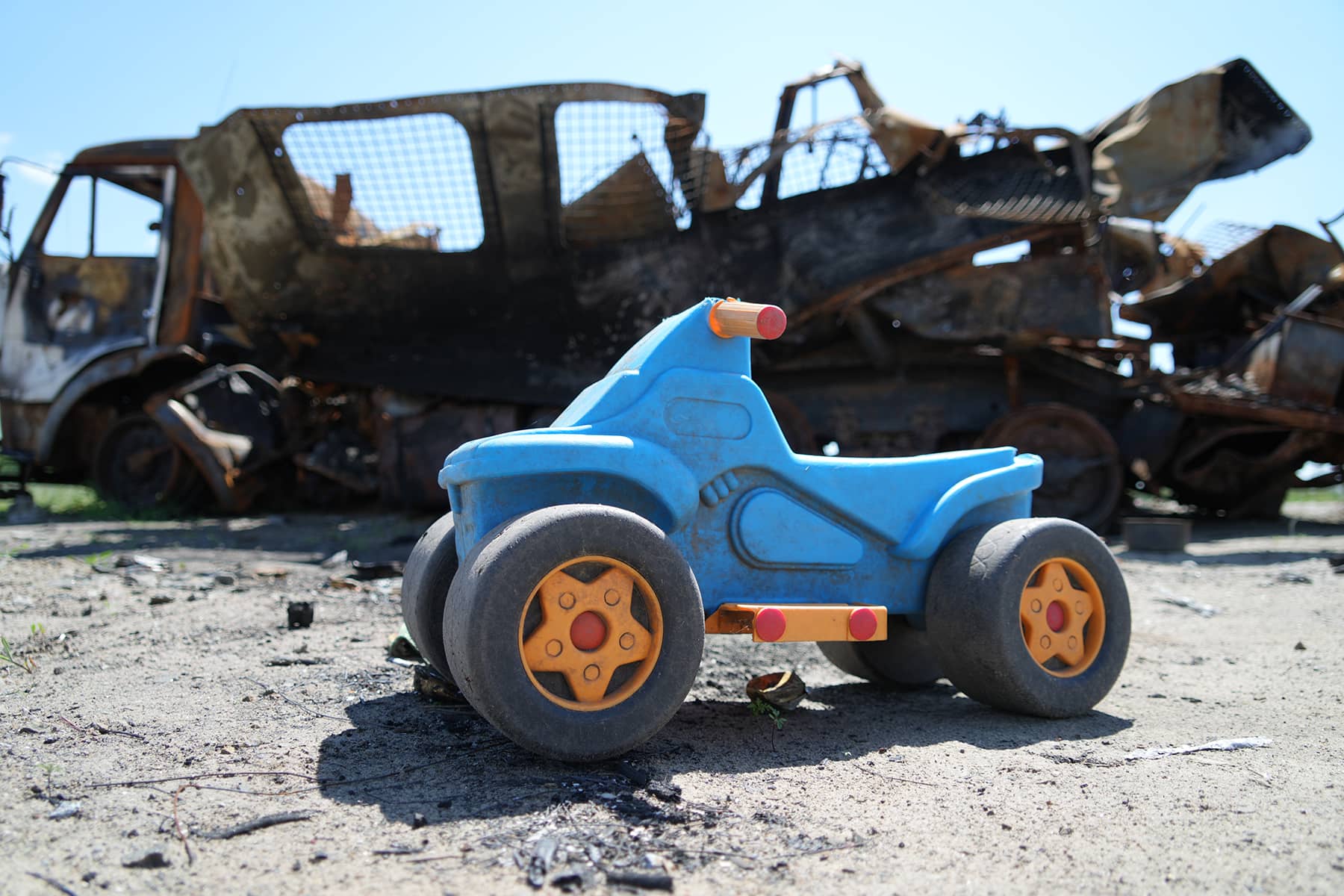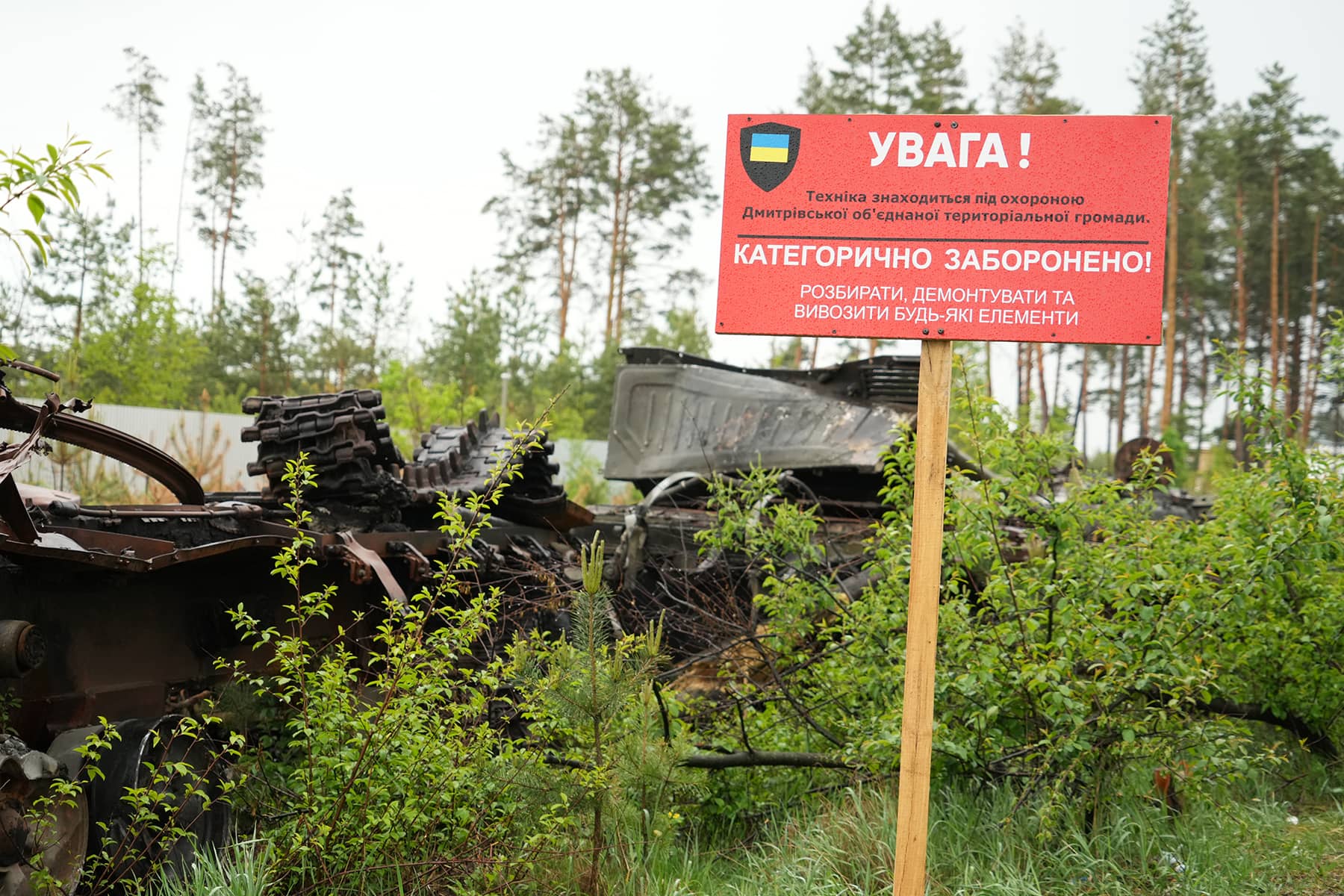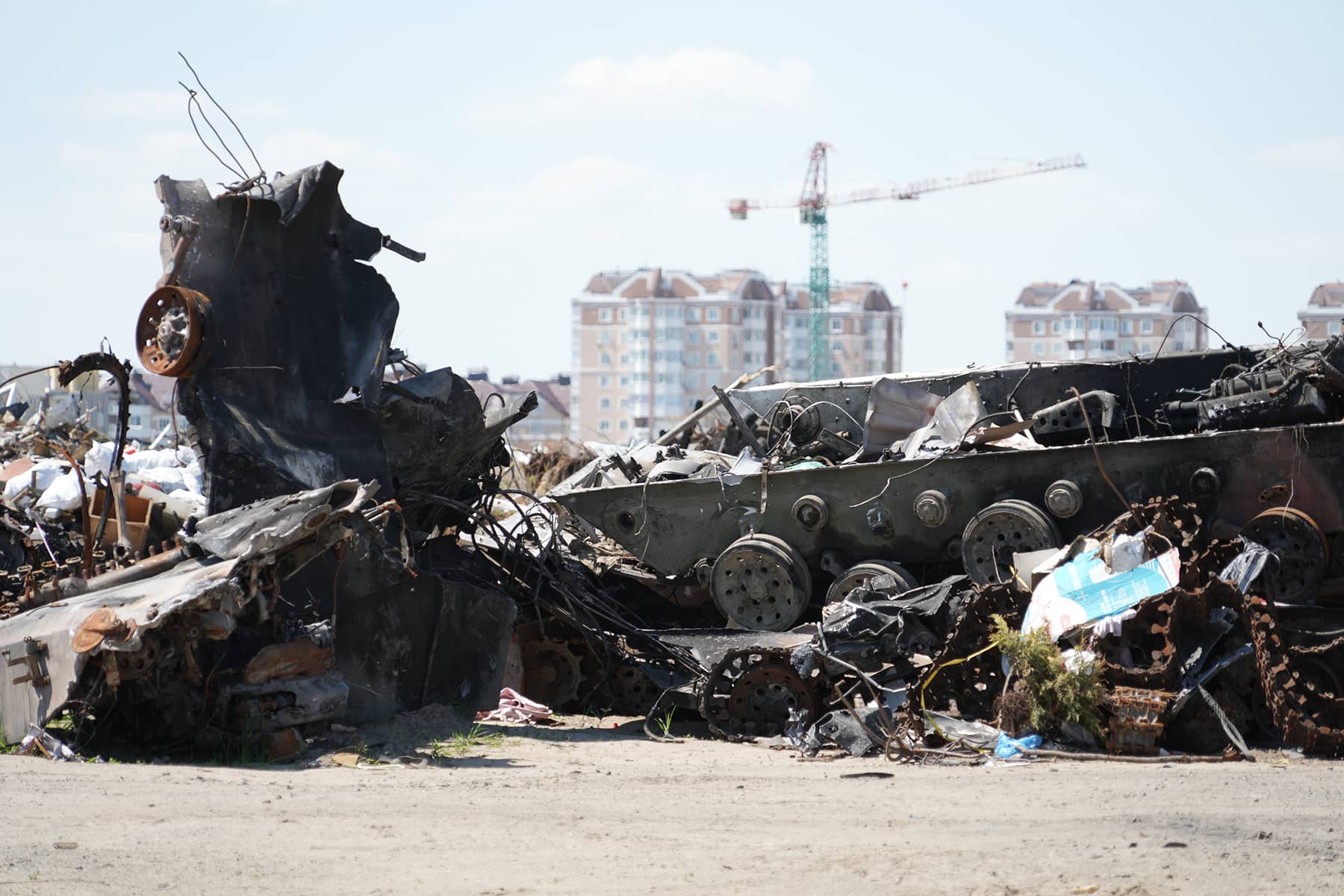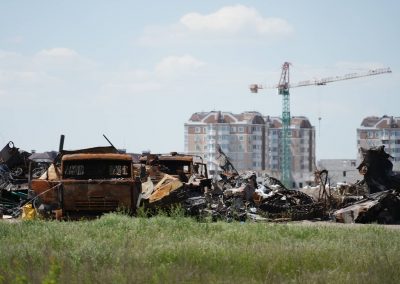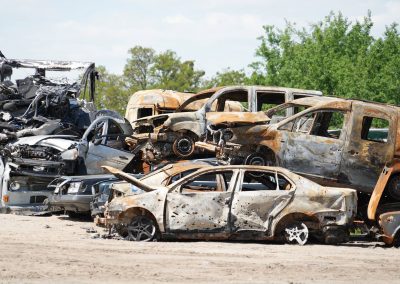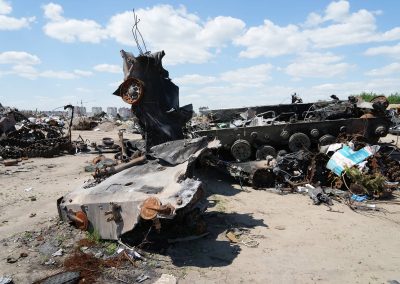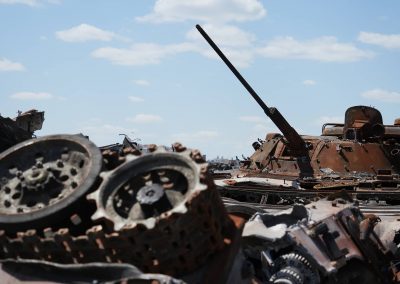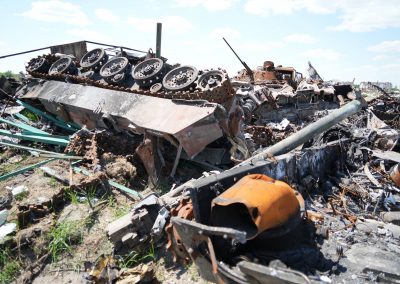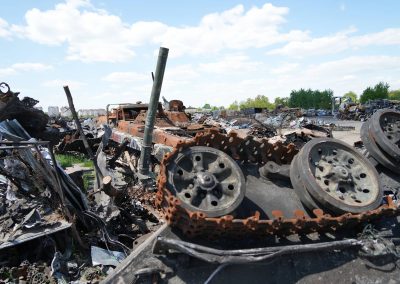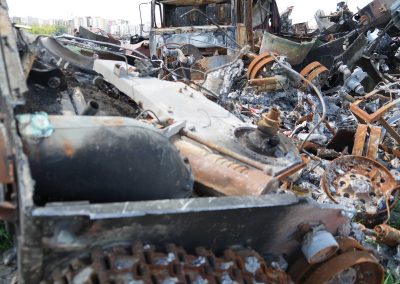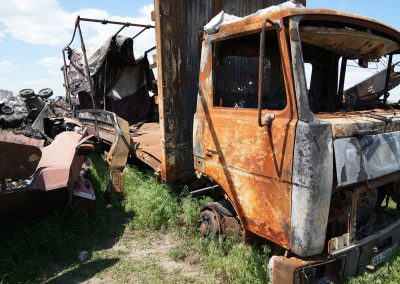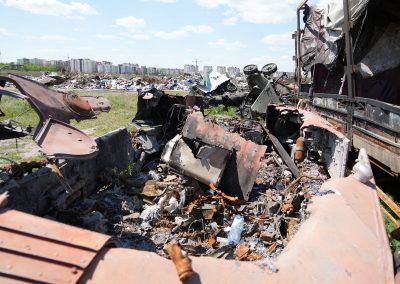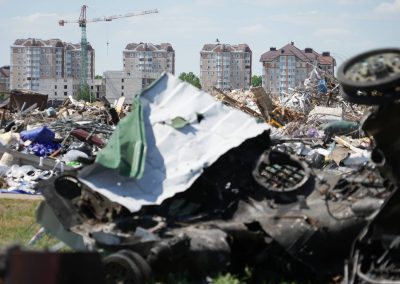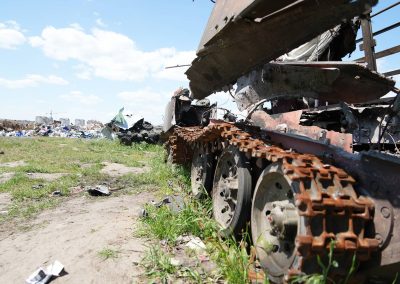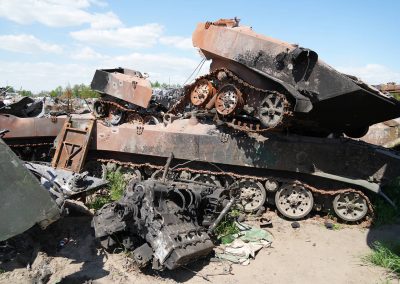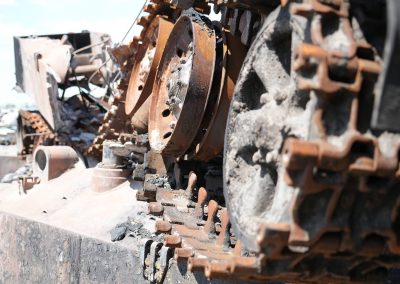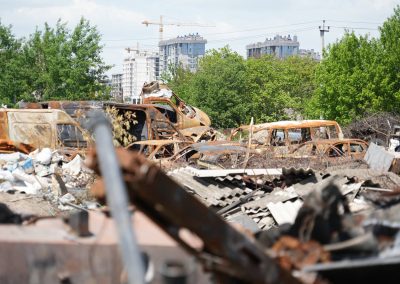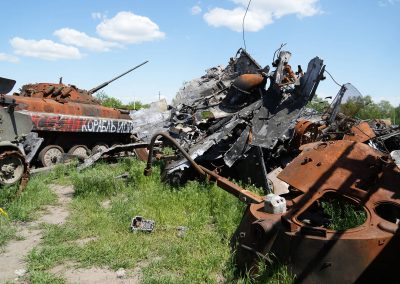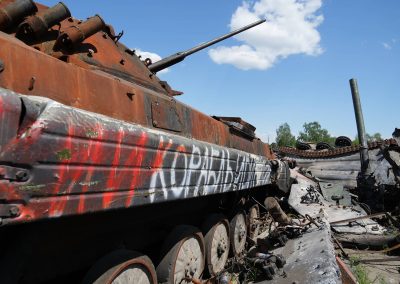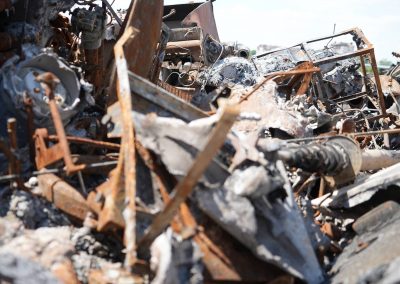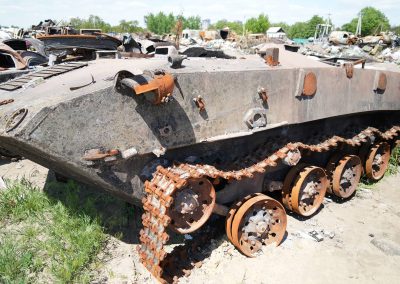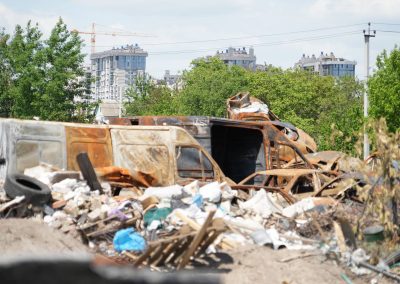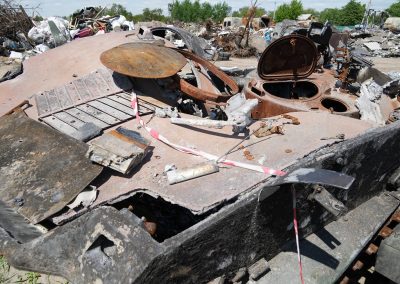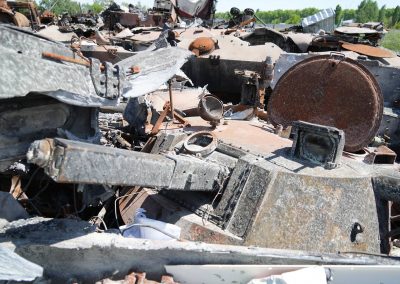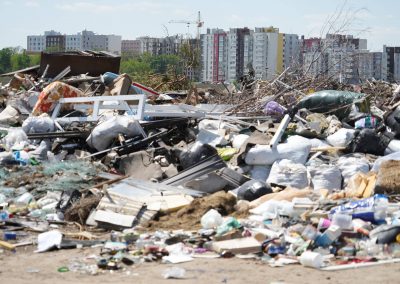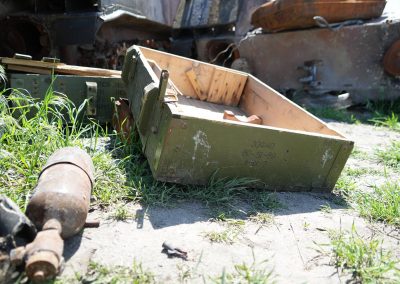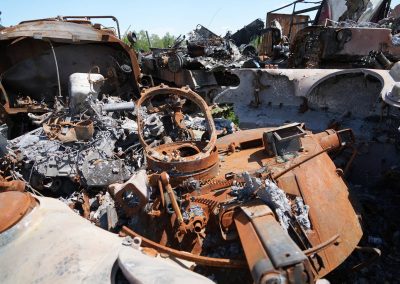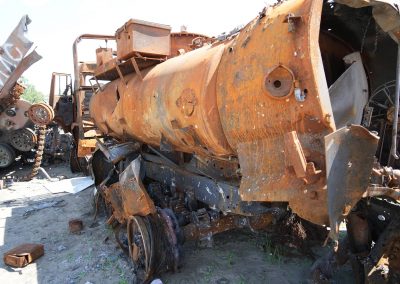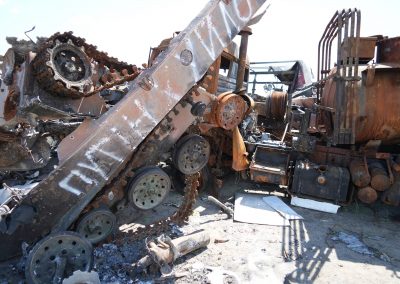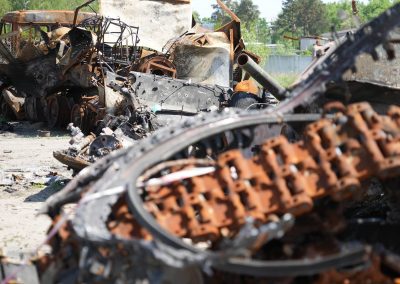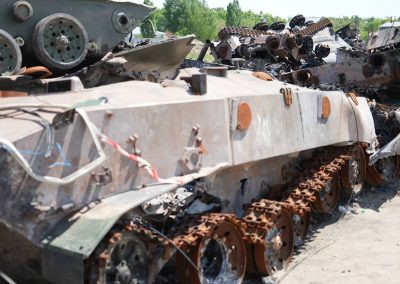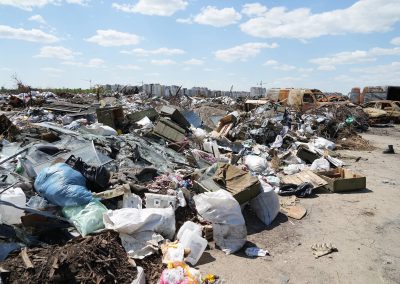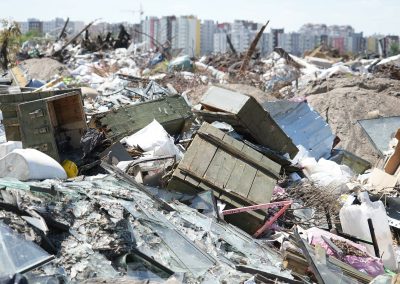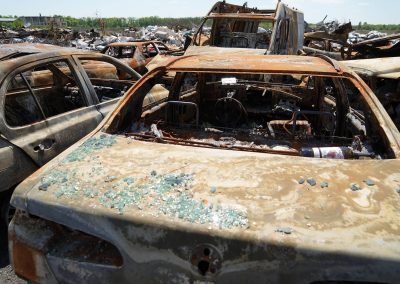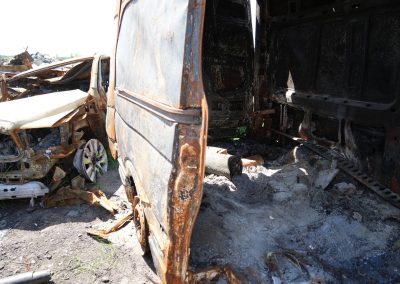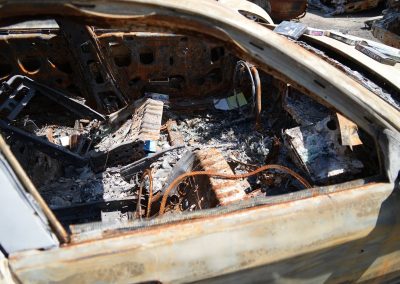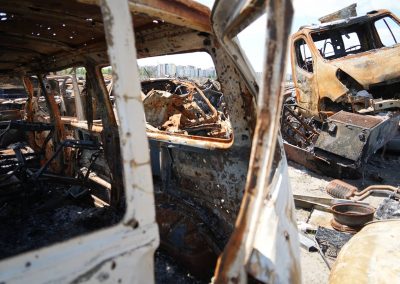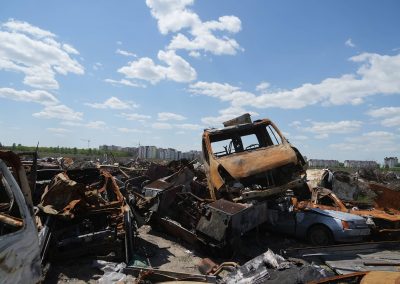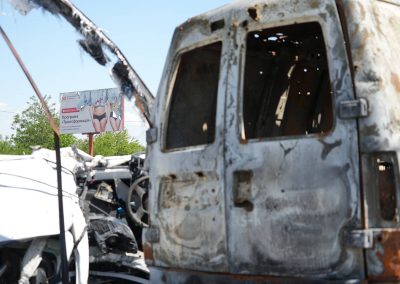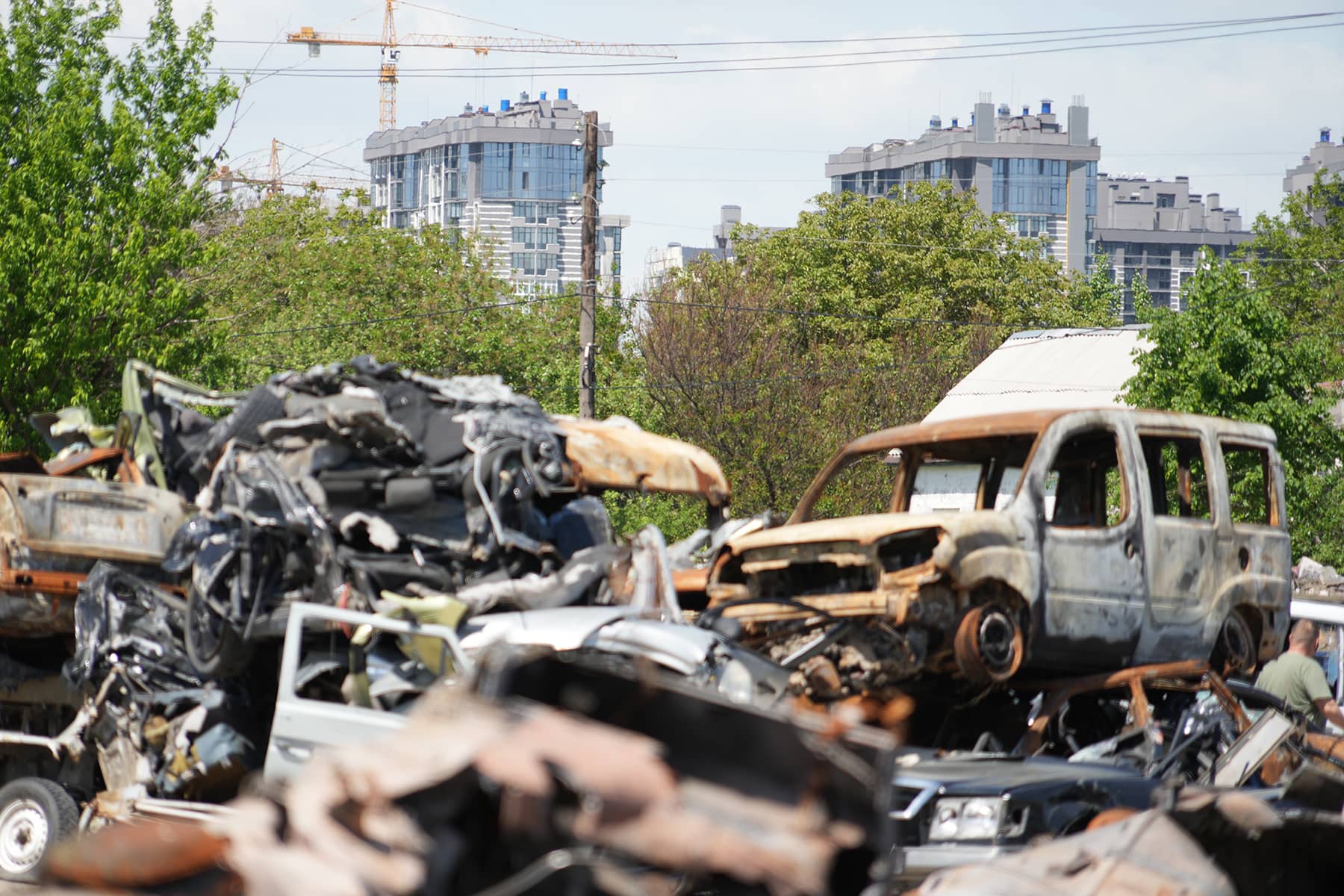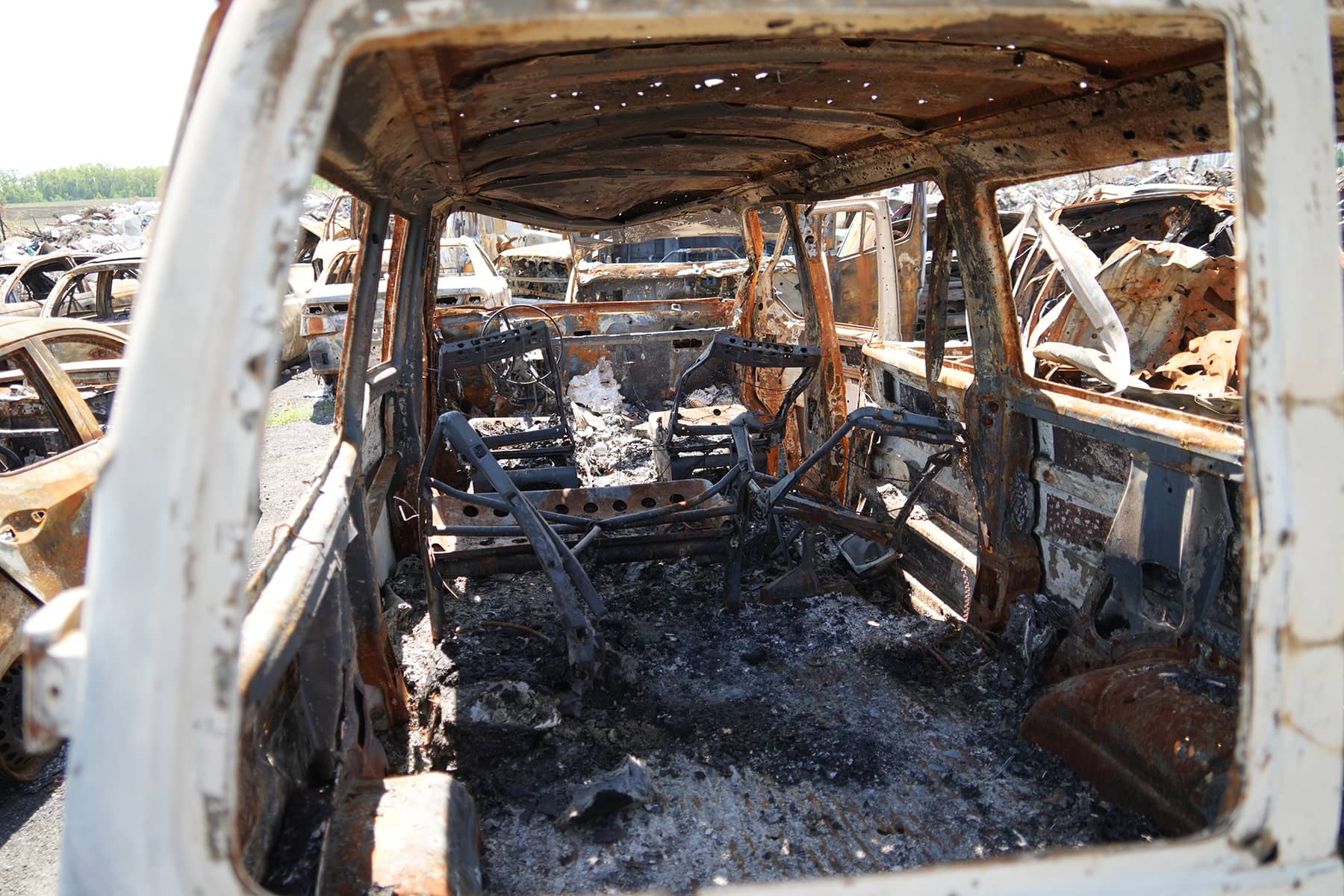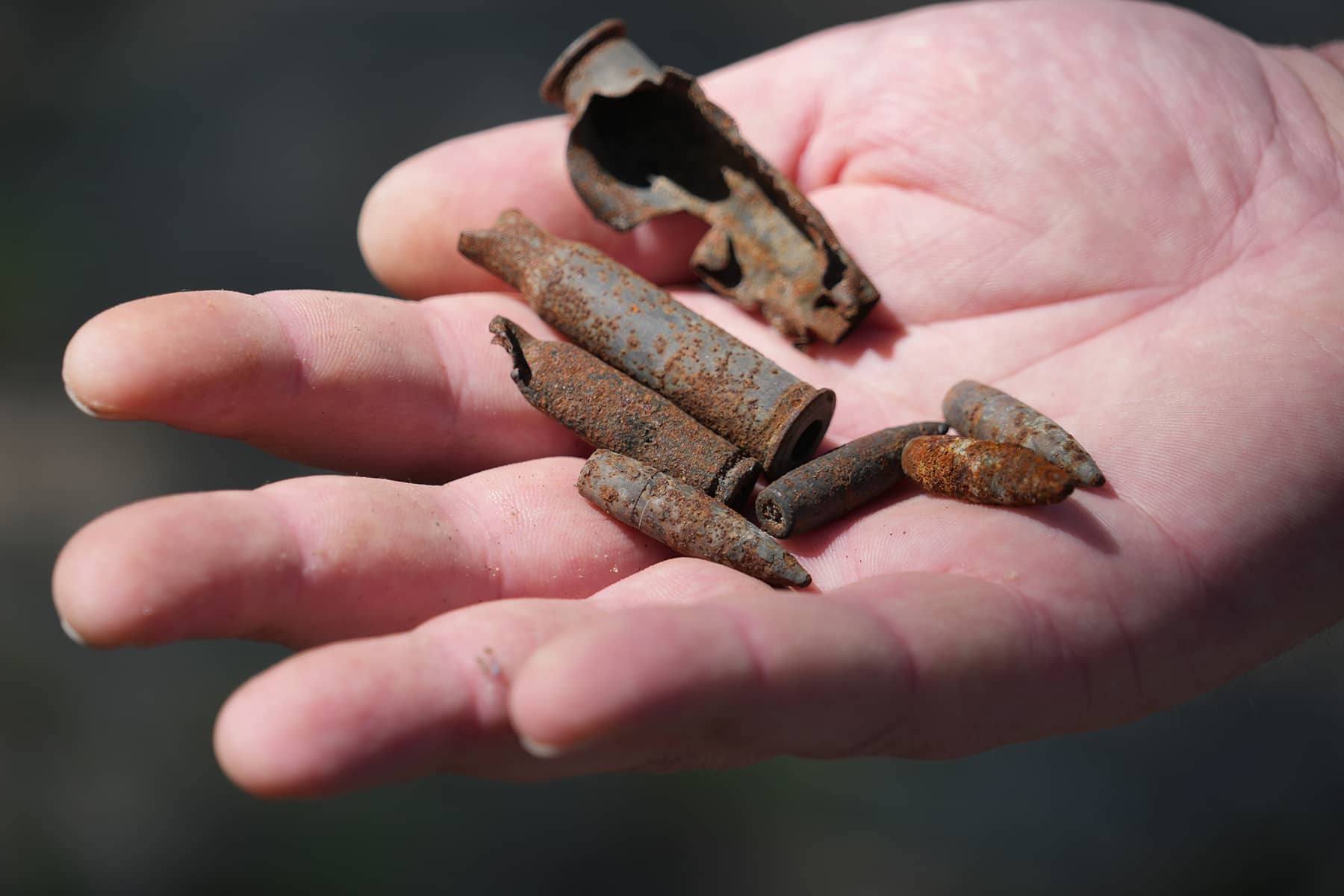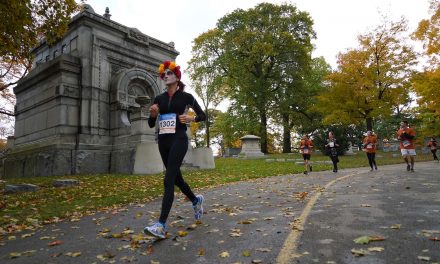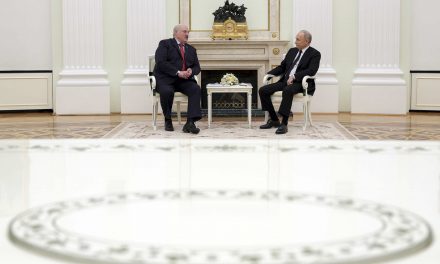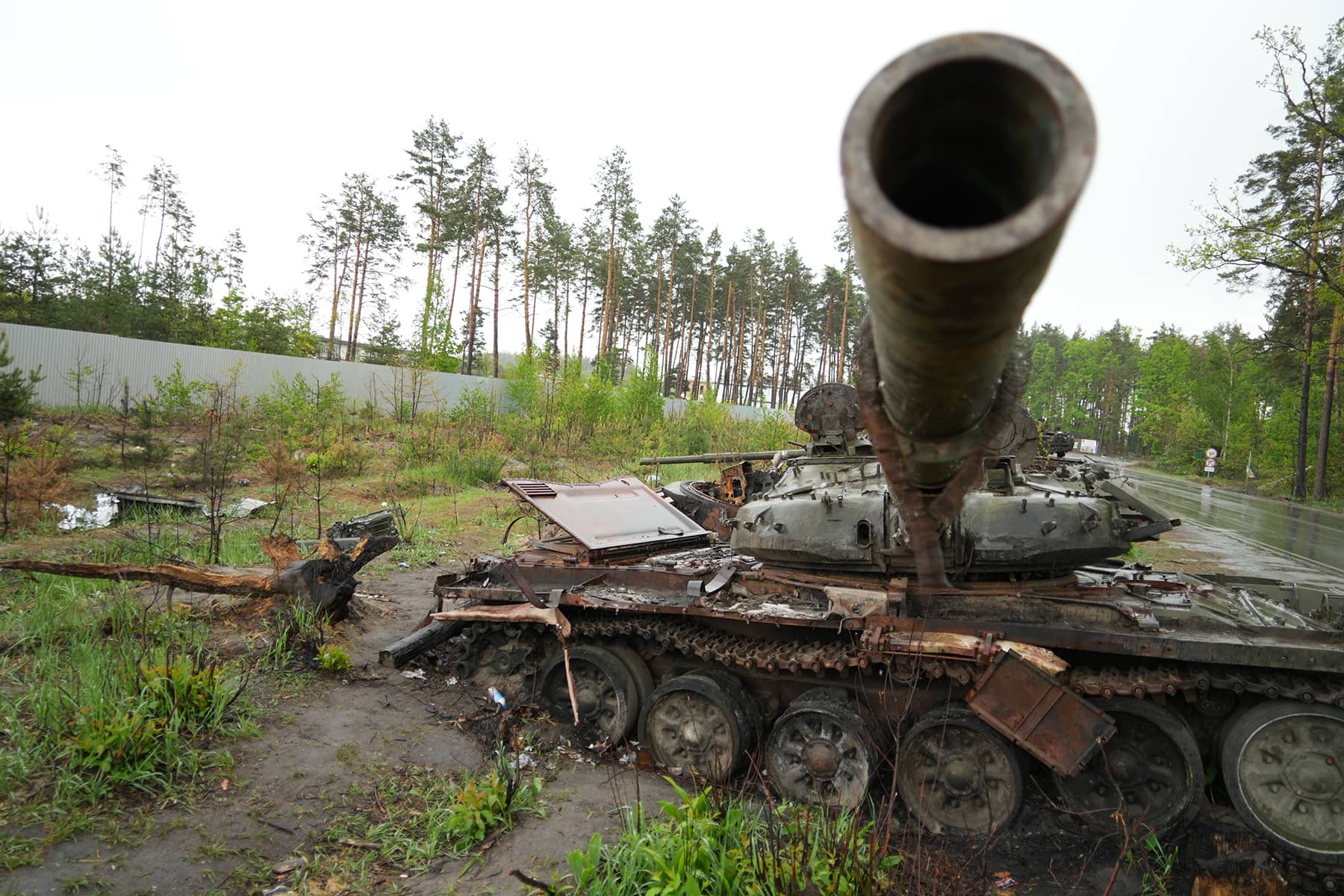
By the end of May, Russian forces had already lost an estimated 31,000 troops in Ukraine. That three month total was half of the American casualties in Vietnam over a decade, and double Soviet losses in Afghanistan over eight years. The extent of the loss and carnage could be seen at military junkyards in Irpin and Bucha.
After weeks of war, much of the destroyed relics of Russia’s failed invasion of Kyiv had been cleared away – even as Russia continued its bloody campaign in Eastern Ukraine. Destroyed tanks and armored troop vehicles were taken to makeshift junkyards. The burnt and rusted hulks showed the scale and insanity behind Putin’s poorly planned invasion.
Yet many of the Russian losses remain scattered across the Ukrainian countryside. The shattered wreckage served as evidence of the effective counteroffensive that not only stopped the Russian drive to capture Kyiv, but drove the inept Russian military out of the region.
It has been estimated that Russia lost between 1,000 and 1,500 tanks, along with more than 3,000 armored vehicles. Several hundred tanks were abandoned or captured in the early days of the invasion, due to inadequate Russian intelligence and a lack of professional training. Amateur videos went viral across social media, showing farmers towing tanks and armored vehicles with their tractors across fields.
The invasion also exposed a fundamental design flaw in Russian tanks, specifically its most widely used T-72. The results of the “Jack-in-the-Box” flaw could be seen in the condition of the wreckage, with tank turrets blown off.
The T-72’s ammunition system is placed within a ring around the turret. The design optimizes storage of shells and allows ammunition to be loaded and fired faster by tank operators. But it also means that if a tank is hit from the top where the armor is thinner, the blast is fatal. A chain reaction can instantly vaporize a crew, as the ring explodes and pops the turret off the hull like a champaign cork.
Many Russian tanks also appear to be plated with bricks, which are reactive armor designed to absorb the impact of artillery. But against anti-tank weapons like the Javelin, supplied by the United States, the T-72 is effectively defenseless. The shoulder fired rockets contain two warheads, the first blows away the external reactive armor, while the second penetrates underneath into the hull.
Despite being outnumbered 5-to-1, and in some cases 10-to-1, the Ukrainian Army showed the ineffectiveness of the Russian military. The catastrophic losses, however, did not deter Russia’s dictator. Instead of fighting Ukraine’s military, Putin directed his forces to commit war crimes by specifically targeting civilian populations. Unable to win on the battlefield, the Russian tactic switched to a brutal genocide.
Along with the military graveyards are vast areas of garbage, but not from the disposal of consumer products. Piles of shatter windows, broken appliances, and every element that had once been homes had been cleared away. They served as a reminder of the vast devastation brought to cities like Irpin, Borodyanka, Bucha, Zdvyzhivka, and others, as the Russian military targeted civilian homes.
© PHOTO NOTE: All the original editorial images published here have been posted to the Facebook page of Milwaukee Independent. That collection of photos contains the MI copyright and watermark for attribution, and may be used for private social media sharing. Do not download and share images directly from this page. mkeind.com/facebook
Series: Reports from Ukraine
- Reports from Ukraine: Traveling from Milwaukee to a country at war just to take a vacation from America
- Images from Ukraine: Latino artist travels to Irpin to paint mural inspired by "Echoes of Guernica"
- Images from Ukraine: Irpin residents welcome reissue of Russian Warship Stamp as latest sign of victory
- Stories from Ukraine: Wandering in the ruins of a shattered life after surviving Russia's invasion
- Images from Ukraine: Similar to the Alamo, martyred cities bought precious time to save a nation
- Stories from Ukraine: Tent camp offers shelter for displaced residents until Irpin can rebuild lost homes
- Images from Ukraine: Graveyards of Russian war machines show the scale of Putin's failure to seize Kyiv
- Images from Ukraine: Following the invasion convoy's 40-mile route and exploring an abandoned base
- Stories from Ukraine: Illegal weapons and proof of Russian War Crimes easily seen along streets of Irpin
- Images from Ukraine: How Irpin’s cemetery processed the staggering massacre of its local citizens
- Stories from Ukraine: Healing remains slow as Borodyanka residents recover from occupation
- Images from Ukraine: The deep scars of war remain visibly etched across the landscape of Borodyanka
- Interview with Oleksandr Markushin: Mayor of Irpin and the hero of a Hero City
- A Meeting of Sister Cities: Former and current Mayors of Irpin ask Milwaukee's business community for help
- Stories from Ukraine: Having a shared purpose helped Irpin's leaders protect the city and stop the invaders
- Stories from Ukraine: How Milwaukee helped a bakery feed hungry survivors in Bucha with fresh bread
- Stories from Ukraine: Bucha resident recalls how Russians turned neighborhood into a street of death
- Stories from Ukraine: How a mass grave of executions overshadowed accountability from Bucha’s leadership
- Images from Ukraine: Putin’s attack on Babyn Yar is a painful reminder of the broken vow of “Never Again”
- Images from Ukraine: An unexpected encounter with Jewish history and the bloody legacy of persecution
- Images from Ukraine: Listening to timeless voices of ethnic heritage etched in stone at Lychakiv Cemetery
- Images from Ukraine: The experience of attending a military funeral in Kyiv while children died in Uvalde
- Images from Ukraine: Stepping out of the fog of war to see the beauty of faith in ancient places of worship
- Images from Ukraine: The cities of Kyiv and Lviv were divided by history but remain united in identity
- Stories from Ukraine: Anya Nakonechna shares why the Lviv Opera is a symbol of her nation’s culture
- Images from Ukraine: A folk village where visitors can experience the life of past generations
- Images from Ukraine: Signs of renewal sprout from under Irpin’s rubble as city looks to the future
Lее Mаtz
Lее Mаtz
Milwaukee Independent editorial team for this special series: (UKRAINE) Lee Matz, photojournalist; Oleh Pinta, translator / reporter; Yaroslav Zdyrko, security / videographer; (MILWAUKEE) Halyna Salapata, logistics / translations.
Milwaukee Independent has reported on the situation in Ukraine since it was invaded on February 24. Coverage originally began with reactions and rallies from the local Ukrainian American community, and relationships with Milwaukee’s sister city of Irpin. Through partnerships and good journalism, sources were developed that enabled Milwaukee Independent to publish developments about the unprovoked war in realtime. In late May, a team from Milwaukee Independent spent nearly two weeks on the ground in Ukraine. The award-winning daily news magazine was the first and, at the time, only media organization to send staff into the country since the war began.
Reports from Ukraine: An extensive news series by Milwaukee Independent from a country at war

